
The second-largest reservoir in the United States now stands at its lowest level since it was filled in the mid-1960s. The view from above is sobering.
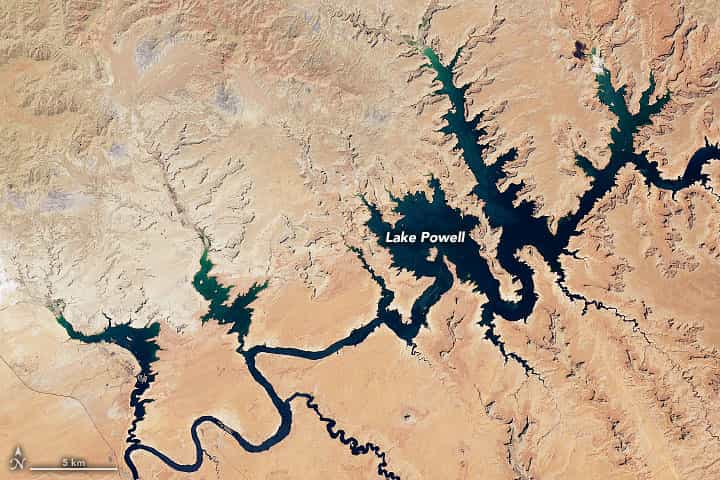
Lake Powell, a key component of the western U.S. water system, is currently filled to just 26 percent of capacity, its lowest point since 1967. On August 22, 2022, the water elevation of the lake surface was 3,533.3 feet, more than 166 feet below “full pool” (elevation 3,700 feet).
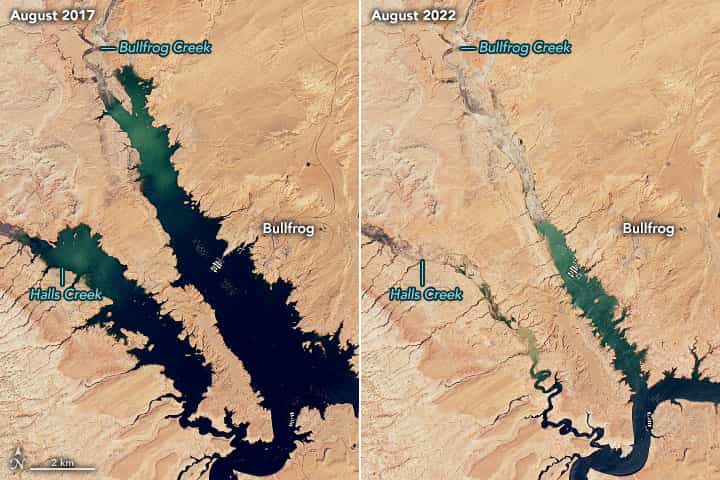
The natural-color images on this page show portions of Lake Powell in the summers of 2017 and 2022, as observed by Landsat satellites. The Operational Land Imager on Landsat 8 acquired the 2017 images, while the Operational Land Imager-2 on Landsat 9 acquired the 2022 images. Lake Powell straddles the border of southeastern Utah and northeastern Arizona; most of the area shown is in Utah. (For a year-by-year view, visit the Earth Observatory feature World of Change: Water Level in Lake Powell.)
The September 2017 images were chosen because they represent one of the highest water levels from the past decade. On August 16, 2017, the water elevation on the lake, as measured at Glen Canyon Dam, was 3,633.04 feet. On August 6, 2022, it stood at 3,535.38 feet, nearly 98 feet lower. The animated line plot below shows water levels at the dam since 1980, when Lake Powell was nearly full. The red line marks “minimum power pool elevation”; below that water level, hydroelectric turbines at the dam can no longer generate energy effectively.
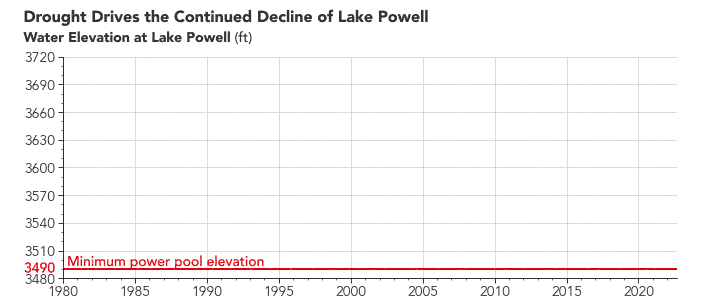
The Colorado River basin is managed by the U.S. Bureau of Reclamation (USBR) and other agencies to provide electric power and water to roughly 40 million people—most notably the cities of Las Vegas, Phoenix, Los Angeles, and San Diego—and to 4 to 5 million acres of farmland in the Southwest. River water is allotted to states (including tribal lands) and Mexico through laws such as the 1922 Colorado River Compact.
Downstream from Lake Powell, water storage at Lake Mead on August 22 stood at 28 percent of capacity, and the entire Colorado river system held just 34 percent. At the same time, roughly 86 percent of the land area across nine western states was affected by some level of drought, according to the August 16 report from the U.S. Drought Monitor.
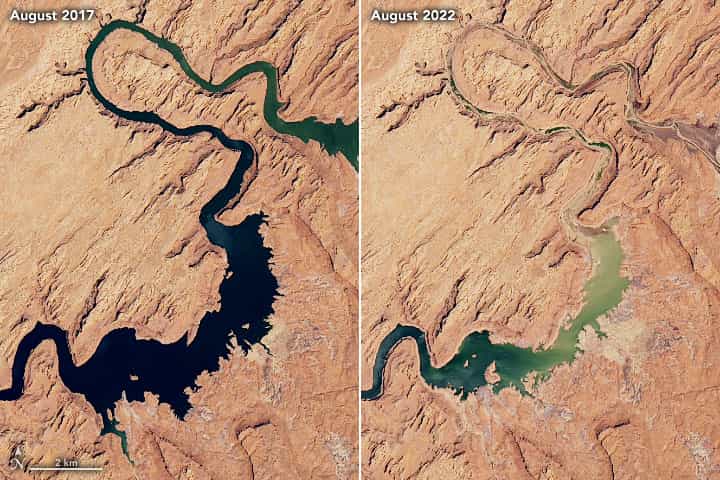
After three years of intense drought and two decades of long-term drought in the American Southwest, federal water managers have been forced to reduce the amount of water that will be portioned out to states around the Colorado River watershed in the 2023 water year. According to an August 16 announcement from the U.S. Department of the Interior, Arizona will receive 21 percent less water from the Colorado River system next year; Nevada will receive 8 percent less; and Mexico will get 7 percent less.
Based on August 2022 modeling projections, USBR expects total inflows to Lake Powell to be just 62 percent of average for the year. Hydrologists predict that Lake Powell levels could drop to about 3,522 feet by January 1, 2023.
This post first appeared on NASA Earth Observatory. NASA Earth Observatory images by Joshua Stevens, using Landsat data from the U.S. Geological Survey and lake elevation data from the Bureau of Reclamation. Story by Michael Carlowicz.
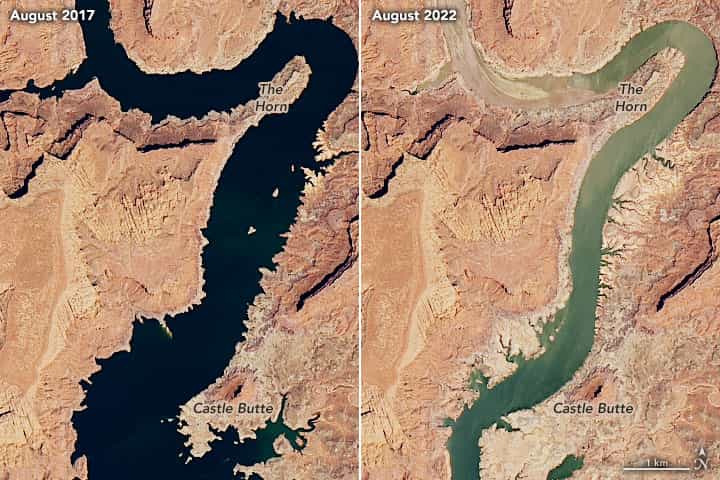
Dave is sharing links from a climate change denial blog that is owned and ran by a college dropout that has no recognition in the scientific community. The blog is sponsored by The Heartland Institute, a Libertarian Think-Tank that peddles scientific disinformation.
Get a grip, Dave!
https://wattsupwiththat.com/2022/08/27/lake-mead-low-water-levels-part-2-colorado-river-inflow-variations-and-trend/
https://wattsupwiththat.com/2022/08/27/lake-mead-low-water-levels-overuse-not-climate-change/